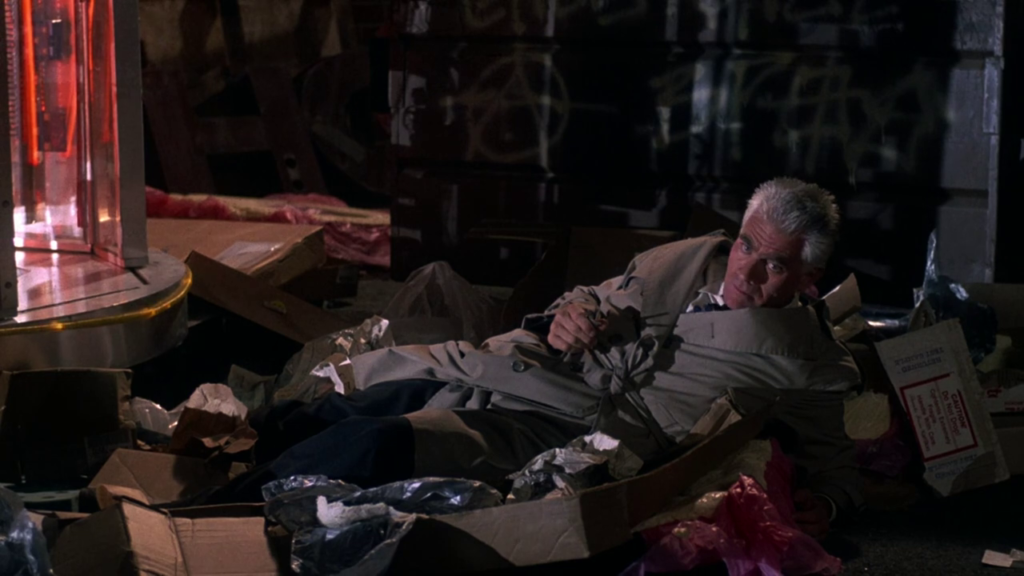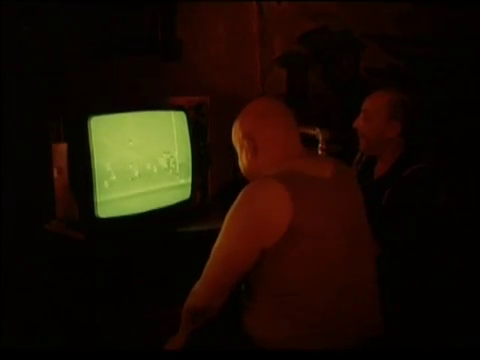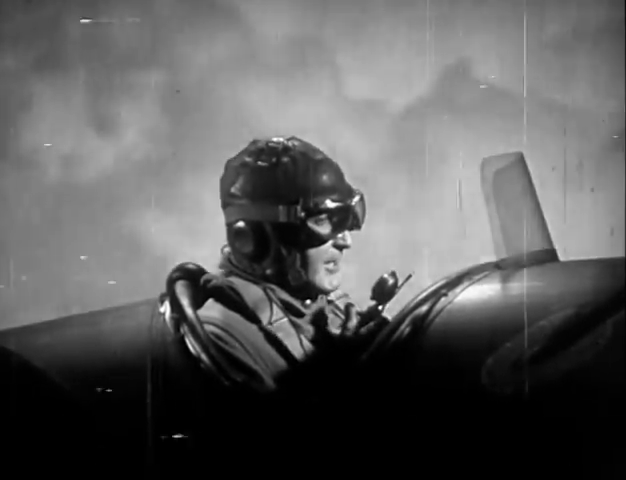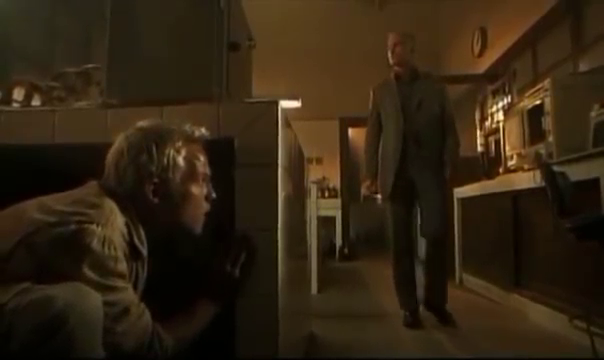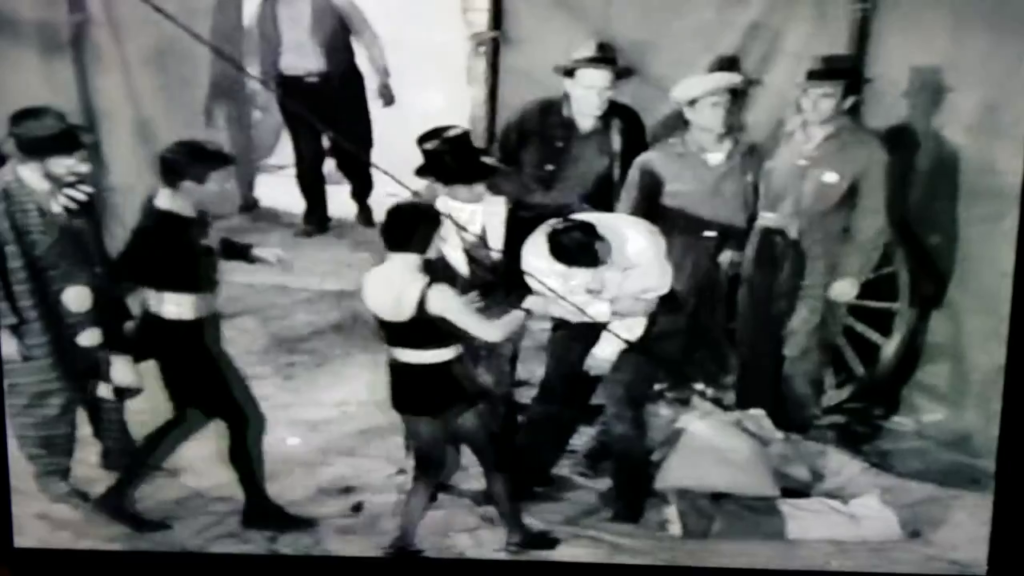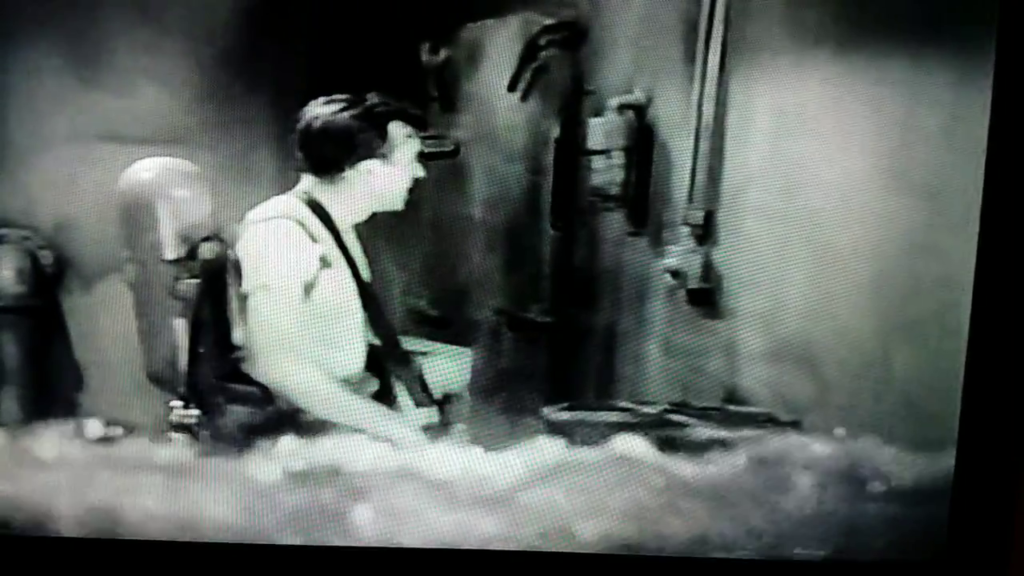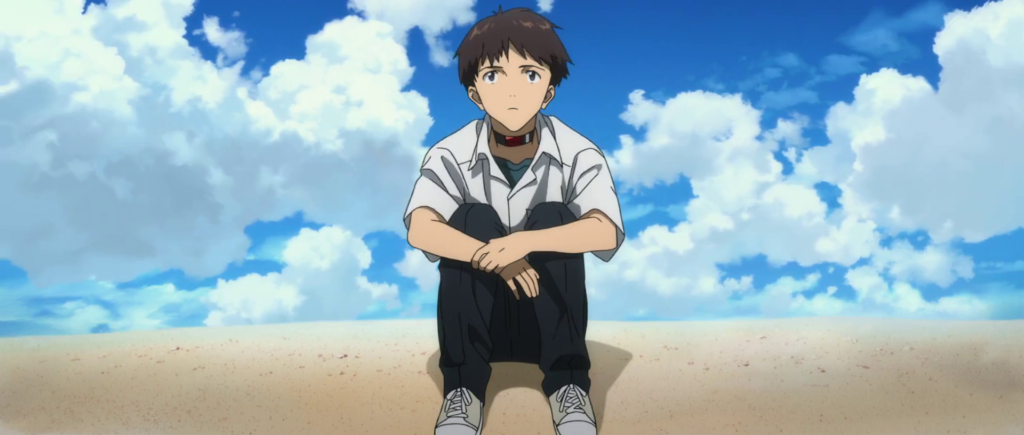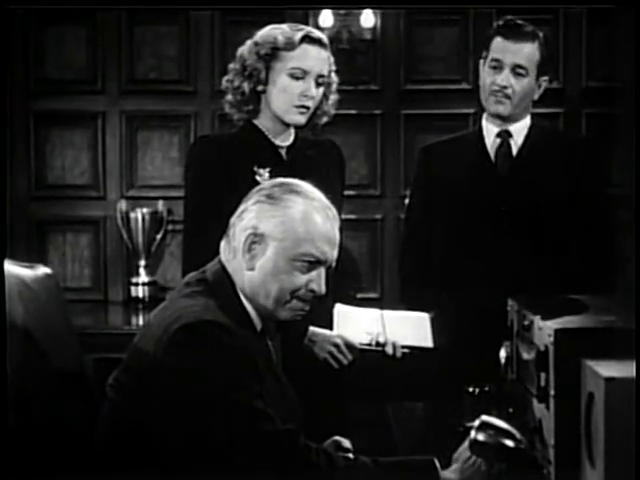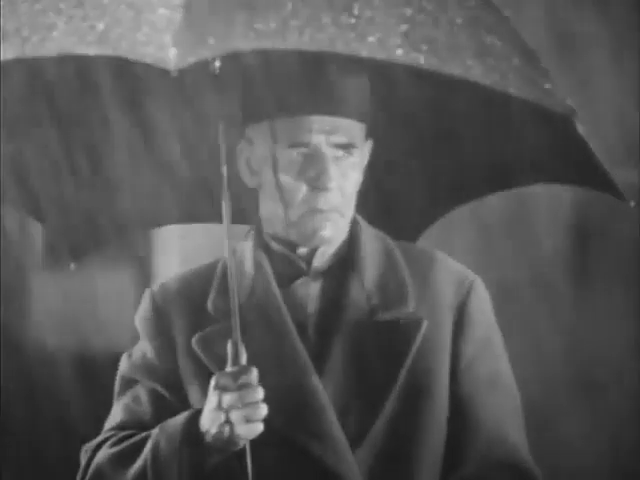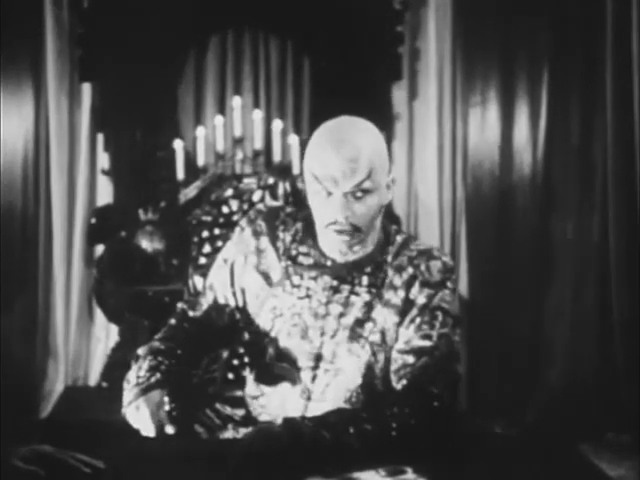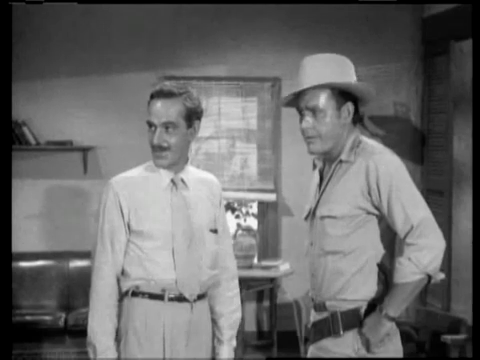-
#476 – Man From the Future (2011)
Man from the Future (2011)
Film review #476
Director: Cláudio Torres
SYNOPSIS: João Henrique, nicknamed “Zero” is a renowned scientist, who is attempting to develop a new infinite source of energy. When he activates his experimental machine, he accidentally finds himself transported back in time to 1991…on the day the love of his life dumped him. Determined to change what happened that day, he goes about trying to change the events that unfolded, but his meddling turns out to have unintended consequences, and manages to complicate his life in ways he never even imagined…
THOUGHTS/ANALYSIS: Man from the Future (O Homem do Futuro) is a 2011 Brazilian sci-fi comedy/romance film. The film opens up with João “Zero” Henrique, a physicist, about to test a machine that will hopefully create an unlimited new source of energy for the planet. To prove that it is safe, he sits himself at the centre of the machine. However, something unexpected happens, and Zero wakes up in the year 1991, on the day his life changed forever: it is the graduation dance, and Zero is unceremoniously humiliated and ditched by the love of his life; an event that defines his life from that point. Desperate to change what happened, Zero goes to find his younger self and convince him to do things differently. In a very expected and familiar story, he changes events in his own past, which leads to a lot of unintended consequences that makes things a lot worse in the present. The story is obviously fairly typical for a time travel film; with going back to the past altering the future in unanticipated ways. The film is split into a typical three-act structure between going back to 1991, the altered present, and back to 1991 again, and the structure helps stop things from getting confusing. On the other hand, there’s not too much unique that the film offers by playing it so safe. The film obviously (and like most time travel films) takes some cues from Back to the Future, but Man from the Future really strays into copying in some respects; in particular, the key setting of the film being a graduate dance as the turning point in the characters lives. The mixture of sci-fi, romance and comedy feels a bit uneven at times, and it wanders a bit loosely between them as a number of issues are thrown up that never seem to be resolved. For example, there’s a side-issue about trying to prove that “love is a fundamental part of the universe” that gets mentioned, but nothing is ever really done about it.
Zero, the main character, is a bit of a flawed protagonist: his life is constantly overshadowed by being humiliated and ditched by his first love Helena at their graduation dance, and it still impacts him over twenty years later. Nevertheless, he is a professor, and has loads of funding for his research, so it’s hard to feel too sorry for him in that regard. You do see his character change as he realises his meddling in the past only made things worse, and he becomes determined to set things right, making him a more likeable character by the end. Helena as Zero’s love interest doesn’t really have too much character other than said love interest, but her acting is pretty good. It is a bit weird how she just seems to be madly in love with Zero even though we never really see how their relationship develops or how she gets to that point, and it seems like she is in love with him simply because the plot needs her to be. The rest of the characters have their own personalities and are acted well, but don’t play too much of a part in the film.
The tone of the film is often quite difficult to figure out: apart from the mix of sci-fi, romance and comedy constantly competing rather than supplementing one another, there’s also the question of who the film’s target audience is. I don’t think it is older viewers because they would have already seen Back to the Future, and would undoubtedly recognise it as derivative of it (I’m not sure how popular BttF is/was in Brazil). It can’t really be seen as a satire or parody of it either, because despite the similarities, it never does anything to undermine the premises and tropes of time travel films, but rather just copies them. I’m not sure the main character being in their forties really appeals to a younger demographic either, although a few raunchy shots and a youth-oriented soundtrack certainly suggests a younger demographic. Man from the Future, on the whole, is produced and made well, with decent acting, and sets and props that are convincing in their scale and polish. However, it doesn’t offer anything unique in terms of its story, and it’s crossing of genres makes it seem muddled, but overall as a bit of light entertainment, it’s easy enough to sit through.
-
#475 – Trancers III (1992)
Trancers III (1992)
Film review #475
Director: C. Courtney Joyner
SYNOPSIS: Jack Deth is trying to make a life for himself after being stranded in Los Angeles. However, he is timejacked to Los Angeles 2247, where it turns out a new wave of trancers have been devastating the future. Jack is assigned to go back to 2002, when the trancers were first developed, to wipe them out at the source…
THOUGHTS/ANALYSIS: Trancers III is a 1992 sci-fi film, and the third film in the Trancers series of films. In the beginning, we catch up with Jack Deth not doing too well for himself after the end of the last film, as he now works as a private detective that finds people cheating on their partners, while his own marriage is heading to a divorce. While out at work, he is kidnapped by a trancer and taken to the year 2247, where he finds out that a new wave of trancers has been created and is waging war against the ruling council that he formerly worked for. He is assigned the task of travelling to 2005, when these trancers were first developed, and wipe them out at the source. The Trancers films centre around the use of a technology in the future that allows a person to be sent back “down the line” (through time) to inhabit the body of their ancestor. This gimmick was explored with some consideration in the previous films, but isn’t really a part of this film; which is a shame because it was the only really unique thing about the films. These films feel very much like a cheap terminator/Blade Runner venture, and again, Trancers III is no different. With a runtime of just over seventy minutes, there’s not really much time to get anything complex up and running, and the film settles for a bunch of action scenes and mindless violence that never really forms into an overarching story. There is the plot concerning Jack’s attempt to stop the formation of the trancers army, but it never seems to come to the forefront of the film, and everything feels a bit disconnected.
The characters are all pretty familiar, with a mix of the characters from the previous films, and other characters which are very familiar action movie tropes. Jack Deth is still the grizzled rouge-ish hero from the previous films, with his inexplicable ability to have women much younger than him fawning over him. He’s a mix of action movie tropes and doesn’t really offer anything unique in that respect, although Tim Thomerson does a good job of over-acting the role, which is pretty good fun. The villain is Col. Daddy Muthuh (slight play on words of “Daddy Mother” if you hadn’t noticed), who has created this new trancer army, and acts as their parental figure (hence the awful pun name). He’s a fairly over-the-top and clichéd villain, but with a name like “Daddy Muthuh” alongside “Jack Deth,” how seriously can you really expect to take this film? The rest of the characters are again pretty typical, and the constant conflict between the women in Jack’s life makes a silly distraction, and constantly raises the question why they are attracted to this man.
Despite being a low budget production typical of Full Moon Entertainment, there’s some decent effort clearly put into some of the elements of the film. The sci-fi props look good and sturdy, and some of the fight scenes are decently choreographed, and display a fairly entertaining amount of action. It does feel like a departure from the noir-esque style of the first two into a more cut-and-paste action movie, and the film loses much of it’s uniqueness in that transition. There’s a few gory moments too that you would not have seen in the previous films. Trancers III has some decent qualities to it, in particular some of the aspects of its production and some of the acting, but there’s very little substance beyond what viewers will have seen previously. Obviously with characters named Jack Deth and Daddy Muthuh you should not be expecting a super serious story or experience, but the odd pacing, short runtime and the lack of a solid set-up amidst the confusing multiple times makes a lot of the film fall flat. It has some redeeming features to make it watchable, just don’t expect to be fully entertained or get anything out of it.
-
#474 – A Visitor to the Museum (1989)
A Visitor to the Museum (1989)
Film review #474
Director: Konstantin Lopushanky
SYNOPSIS: In a seemingly post-apocalyptic world, a man visits the shoreline from the city to visit a museum that is only accessible one week every year when the tide is low enough. He is following the rumour that somewhere inside is a portal to another world, where one can escape the hell that is the one he lives in has become…
THOUGHTS/ANALYSIS: A Visitor to the Museum is a 1989 soviet post-apocalypse film directed by Konstantin Lopushanky. The film is set sometime after an unspecified ecological disaster has ravaged the planet: many people have become mutants and are locked up in reservations to be used as slave labour and such, while what remains of the unmutated live in cities. We aren’t given too much detail on the state of the world or what happened to it, but the backstory isn’t really important: like a lot of post-apocalypse films, how the world ended doesn’t mean much when you’re just trying to survive day-to-day in a new harsh world. A man visits the coast from the city hoping to visit a museum of relics from the old world buried beneath the sea. The path to the museum is accessible only once a year when the tides are low enough, and the man is following a rumour that within the museum is a portal to another world to escape the horrors of the one he currently lives in. The story of the film is very abstract and never hinges on definitives: a lot of the plot is casually explained as the man has tea with the family he is staying with, and they talk about the state of the world as very much matter-of-fact, in contrast to the true hell that the mutant “degenerates” are constantly experiencing.
Konstantin Lopushanky, the director of this film, worked on Andrei Tarkovsky’s Stalker film, and it definitely shows: the themes of isolation and desolation in a post-apocalyptic world and trying to find a way out are shared between the two, and there are very similar camera techniques and effects used to convey this. Lopushansky, however, always feels like Tarkovsky’s apprentice, and never really surpasses the master that is Tarkovsky, or offer anything different. The weak links in the film are definitely how the story reveals itself, and offers very little direction or clue to what is going on. Obviously, the film is meant to be ambiguous and centres around a loss of meaning in the post-apocalypse, but the film feels a bit too ambiguous in centring the main character and certain aspects of the film so you never know where they are or what’s going on. The plot points that do offer something include the contrast between the unmutated, who are unbothered atheists, and the God-fearing “degenerates” who scream out bible verses and quotes, even though none of them know what any of it means because the meaning of the bible has been lost.
The production of the film feels very considered, and again obviously taking inspiration from Tarkovsky. The outdoor location shots looks great, particularly the mountains of garbage and rubble that our protagonist traverses, which is apparently what most of the world looks like now. The landscape shots that emphasise the isolation of the protagonist abandoned amidst nature also works well. There’s also the large crowds of mutants in certain scenes give off an eerie feeling, as they move and act in seemingly genuine terror. Lopushansky uses the colour red to completely light many of the scenes, and it provides a good bit of consistency throughout.
This is definitely not a feel-good film: it is the end of the world, and we’re meant to feel it, the only hope of escape is this absurd rumour the protagonist is chasing about a portal to another world, which as the only option, shows just how bad things are, but again the unmutated just sitting around and discussing over tea as just a simple matter-of-fact furthers that strange contradiction. Overall, Visitor to a Museum definitely tries to capture some of that Tarkovsky magic of slow, epic films, but it never really hits the mark completely, nor does it offer anything new or original to the Tarkovsky formula. It’s not a bad film, and it received some decent recognition and awards, but again falls short of the master due to leaving things too ambiguous and without direction.
-
#473 – Ghost Patrol (1936)
Ghost Patrol (1936)
Director: Sam Newfield
Film review #473
SYNOPSIS: Professor Brent has invented a machine that can stop internal combustion engines from a distance. The leader of a group of bandits kidnaps him and forces him to use his invention to bring down aircraft so they can rob them. Federal agent Tim Caverly is sent in to investigate and rescue the professor, and when the local bandits mistake him for outlaw Tim Toomley, he assumes his identity in order to get closer to the bandits and uncover their plan before they bring down the next plane…
THOUGHTS/ANALYSIS: Ghost Patrol is a 1936 film. The story centres around a device that is able to bring down planes from a distance by stalling their engines, and a gang of bandits that has kidnapped the inventor and forcing him to use the machine to bring planes down, so that they can loot the wreckage. Government agent Tim Caverly is sent in to investigate and rescue professor Brent, who invented the device. Encountering the bandits who are responsible, they mistake him for Tim Toomley; a noted outlaw, and Tim plays along in order to get closer to the bandits and find out where the professor is. The film is basically a western with the added sci-fi element of this machine that can stop internal combustion engines. It’s called a “radium tube,” and a lot of the inventions in these films are named after radium, or fuelled by it for some reason. Anyway, at just under an hour long, there’s not too much in the way of content to talk about: the pacing is slow, and there’s just a lot of horseriding and dialogue that moves along the story at a slow pace. Everything is quite predictable and unsurprising, and a swift resolution at the end doesn’t provide much of an exciting climax. The plot reminds me very much of a film serial, which would probably have found a way to stretch the story into three years of a back-and-forth between the characters, while adding nothing of value otherwise.
The characters themselves are pretty forgettable and bland too. Tim Caverly/Toomley is a standard gun-slinging cowboy with no real personality. His sidekick serves as a bit of comic relief, and the sole female character delivers a good performance, but ultimately serves very little purpose other than being the daughter of the professor (the only purpose a vast majority of female characters have in films at this time). The villains are, as well, a rather forgettable bunch.
There’s not much that is remarkable in terms of the film’s production: most of it looks like repurposed sets and props from any western from the era. The machine looks quite cool and complex, but we don’t really see much of it: in fact, the professor and the machine don’t show up until after halfway through the film. The lack of any accompanying music also makes the film feel empty, and there’s a mismatch in the audio, which means you can hear when the film is on a set from the echo in the audio to when it is outside on location. Also, I’m not sure what the title “Ghost patrol” is referring to, as there’s nothing remotely ghost-like or much patrolling done at all. Overall, Ghost Patrol is a fairly forgettable film with unremarkable characters, a story you’ve seen before, and a setting in an oversaturated western genre that even with a sci-fi twist fails to stand out.
-
#472 – Ancient Relic (2002)
Ancient Relic (2002)
Film review #472
Director: Sebastian Niemann
SYNOPSIS: At an archaeological dig site in Israel, archaeology student Steffan Vogt stumbles upon an unbelievable discovery: a 2000 year old skeleton that has a metal implant, and the instruction manual for a video camera that has not been commercially released yet. Alongside it, a note detailing the existence of a video recording made of Jesus Christ when he was crucified. While most of the crew believe it to be some form of hoax, Steffan believes that the only possible explanation is a time traveller that went back into the past to film the momentous occasion. When a secret order starts to take control of the dig and silence anyone that knows about this discovery, Steffan teams up with Sharon and Joshua, who were also at the dig site, to uncover the truth about what is happening, before they too are silenced…
THOUGHTS/ANALYSIS: Ancient Relic (Also known as The Hunt for the Hidden Relic, or The Jesus Video) is a German 2002 TV movie based on the novel by Andreas Eschbach. The opening of the film shows an archaeological dig site in Israel, where one of the students at the site, Sebastian Vogt, accidentally stumbles upon a burial site that’s full of mystery: a 200-year old skeleton that has signs of being form the present, such as a metal splint on his legbone, and the instruction manual for a video camera. Most of the archaeologists believe it is some form of hoax, but Steffan believes that the only possible explanation is that it is the work of some time traveller. A handwritten note accompanying the skeleton suggests that they actually videotaped the crucifixion of Jesus, which would be irrefutable proof of his existence. When Steffan tries to investigate further, he is shut out by a mysterious group who arrive and take control of the discovery. Steffan tries to sneak in and get more information, but starts to be hunted by this group as apparently he now knows too much. Steffan goes to fellow archaeologists Sharon and her fiancée Joshua, and the three attempt to unravel the mystery and find the video camera before they are killed. The plot is pretty typical conspiracy, ancient order, religious stuff; with secret groups trying to get a hold of the supposed video recording of Jesus as it would apparently be a weapon of such power, that if it disproved the existence of Jesus, western civilisation would simply collapse. I think that’s a bit of an overstatement, as I’m sure people that didn’t want to believe evidence that doesn’t fit their worldview can just call it a hoax and move on. Most of the elements of the story are left pretty vague, including these ancient orders and what they actually do. It’s probably something that’s more fleshed out in the book, but instead this film just opts for constant chase scenes and stalking that never really goes anywhere, and never arrives at the interesting bits, such as actually seeing the content of this recording, which is saved until the very end, and reveals a “surprise” twist that is entirely predictable, and just leaves open more questions that it answers.
The characters are all pretty uninteresting. Steffan just a young, well-built lead that can do all the action sequences and take a lot of cuts and bruises. His opening trait that he is an atheist doesn’t really play much of a part in the story, although obviously as the whole “Jesus video” thing starts emerging, he starts to question his atheism in a very predictable fashion. The love triangle between Sharon (the only female character), her fiancée Joshua, and Steffan is entirely without note, and again very predictable. The villains are basically henchmen of this secret organisation, and are never given any character development, or motivation, because we never get a clear sense about the purpose of this organisation.
As mentioned, we don’t see the contents of the video recording until the very end, and as a pay-off it doesn’t really deliver something satisfying that required nearly three hours of build up. The aspect of time travel is barely explored, and only explained through exposition and recordings that have no direct effect on what’s happening on-screen. The whole idea of a camcorder recording Jesus also seems a bit unbelievable, particularly it’s being able to work two thousand years later. The most notable aspect of the production is the English dubbing, given that this was originally a German production: The dubbing is terrible, and none of the voices have any real emotion or direction, which is constantly distracting from any drama on screen. Overall, Ancient Relic has an interesting story and fits into that genre that the Da Vinci Code really popularised. It is however, not a great example of the genre: the organisations and conspiracies are intangible and don’t really connect to anything specific, the mystery is very generic, and the pay-off isn’t worth it. I’m sure the novel is a lot more interesting than this poor adaptation, and I would suggest checking it out if you like these sorts of stories, because this film adaptation won’t satisfy.
-
#471 – King of the Carnival (1955)
King of the Carnival (1955)
Film review #471
Director: Franklin Adreon
SYNOPSIS: A counterfeiting operation to flood the United States with fake money leads to treasury agents Art Kerr and Jim Haynes to investigate a circus in connection with the operation. Art asks acrobat Bert King to aid them in putting a stop to the counterfeiting, and to unmask the villain responsible…
THOUGHTS/ANALYSIS: King of the Carnival is a 1955 film serial and the last serial made by Republic Pictures. As the other two serial producing companies (Universal and Columbia) has already stopped producing them, King of the Carnival stands as the final serial, and the end of the format as a whole. The serial is set in a circus, where Bert King performs as an acrobat (The title “King” of the carnival refers to Bert, and is something that Republic Pictures also did with the lead character in King of the Royal Mounted). When agents of the U.S. treasury Art Kerr and Jim Haynes arrive on the scene investigating a counterfeit operation they believe is connected to the circus, Art asks his old friend Bert to aid them in unravelling the sinister plot. The villain’s plot centres around the production of counterfeit money and flooding the U.S. with it, so that the currency is devalued and other countries lose confidence in it. If that sounds like a dull and boring set-up, that’s because it is. There’s nothing else to this story other than this bizarre plot that doesn’t really make sense: surely it would take a huge operation to destroy a currency like the U.S. dollar, and the serial just has one guy working in a sunken boat. Such an intangible plot never connects with the viewers, and will be sure to bore. The plot does have this similar theme of many post-war serials, in that foreign powers attempt to sabotage the U.S. in some way, marking the onset of the cold war. However, the serial format never returned to it’s peak popularity like it had during the war. The circus element of the story is a bit more unique, but a lot of the action scenes are footage taken from the earlier serial Daredevils of the Red Circle, which wasn’t too great itself.
The characters are a typical and uninteresting bunch. You have the male leads, a single female character who is also an acrobat at the circle (although you never see her doing any of the stunts because the footage taken from Daredevils of the Red Circle had no female performers). The villain “Zorn” has no real presence and just gives orders to his henchmen to do the dirty work. It is revealed that someone at the circus is actually the leader of the counterfeiting operation, setting up a mystery villain reveal at the end, but you probably won’t care as it makes no real difference to the plot.
When this serial was released in 1955, the world of cinema and media in general had moved on from the fifteen or twenty years before when the serial was so popular. However, King of the Carnival could easily have been made at the height of the format’s popularity, and still be pretty poor. It takes no advantages of any advances in technology and the evolution of cinema, and just ends up being another cut-and-paste job that many of the serials are. At this time too, obviously televisions were appearing in people’s homes, and the idea of going to the theatre every week to watch a new instalment was fast becoming outdated when you could just tune in to an ongoing series from your television at home. The serial format never really tried to change or adapt to the times; the companies that made them clearly just saw that their time was up, and focused on feature films. Not that I can really blame them, as the introduction of TV made the format redundant. Going back to King of the Carnival, it feels very much like a poor production that is well aware of it’s fate. The ‘circus’ is clearly just a set with cloths draped all over them to give the illusion if it being a big tent, and the cliffhangers lack any form of imagination or suspense, especially when viewers had been seeing these same ones for over twenty years. Overall, King of the Carnival is a poor swansong for the serial format, accentuating their worst elements such as low budget, repetition, and one-dimensional characters, while not providing any imaginative settings, devices etc. that some of the more popular serials did. The serial format had very much run its course, perhaps many years before King of the Carnival was released, and it is a stark reminder of all of it’s worst elements.
-
#470 – Evangelion 3.0 + 1.0 Thrice Upon a Time
Evangelion: 3.0 + 1.0 Thrice Upon a Time (2021)
Film review #470
Directors: Hideaki Anno, Kazuya Tsurumaki, Katsuichi Nakayama, Mahiro Maeda
SYNOPSIS: Following the aversion of the fourth impact, the Eva pilots are left wandering the ruins of Tokyo-3 defeated and deflated, until they are picked up by familiar faces that take them to a settlement where people are surviving in the world that has been left behind by the pilots actions. They do their best to fit into this new world, but they know that their fight is not over, and the final battle to save humanity is edging closer…
THOUGHTS/ANALYSIS: Evangelion 3.0 + 1.0 Thrice Upon a Time is a 2021 Japanese animated film, and the fourth and final film in the Rebuild of Evangelion film series. The film starts out with a battle in Paris, where WILLE are attempting to restore the city to a habitable condition. They succeed, and the focus switches to the three protagonists who we saw at the end of the previous film, wandering the ruins of Tokyo-3 without purpose as their EVAs have been destroyed. They are rescued and taken to a small settlement where they meet some of their old school friends, who have now grown up, while they remain the same age due to a side effect of being EVA pilots. The first part of the film is set in this settlement as the three try to come to terms with what has happened and being around other people. It’s slow paced, but gives ample time to focus on each of the characters individually and their own personal journeys. Although the characters have been psychologically explored in the previous films, it still feels rewarding to do it again, and as this is the final film, provide some closure for their own individual journeys. The themes of finding your place in the world amongst others, and taking responsibility for your actions are fairly clear, and drive the character’s journeys and their individual responses. The plot structure of dedicating the first half of the film to this more slow-paced exploration and the latter half focusing on the action and lore is a good balance, and stops one interrupting the flow of the other. If you’re watching this film, it is probably not your first experience with the franchise, but if it is, you’re definitely not going to be able to keep track of everything that’s happening (this is also true if you’re a die hard fan, but in that case, you’re somewhat expecting not to get everything right away and that some things are open to interpretation).
The latter half of the film is when the action kicks in and the stakes get raised to infinity. The film manages to push itself even further than the TV series and End of Evangelion (The alternate telling of the TV version ending). All of the new elements that were added over the film series are addressed and resolved (apart from those which are intentionally left ambiguous). It even manages to incorporate the events of the TV series as somewhat canon. As such, it is a satisfying conclusion to the series that gives the characters the ability to look forward to the future. The action scenes constantly pile more and more things into them as it gets quite over-the-top, but again, it’s what you come to expect from the series. The characters don’t offer much in the way of surprise, but one or two of them get a small change or development that rounds off their characters, which is nice.
Accompanying the film is the usual over-the-top orchestral soundtrack and visuals that encompass the entire planet. The animation is pretty smooth, but the CG looks a bit unconvincing in some parts; I’m not sure if some corners had to be cut due to the pandemic, but for the most part, it still looks pretty good and consistent with the other films. With a runtime of over two and a half hours, the film feels like it says all it needs to say and do. Overall, Evangelion 3.0 + 1.0 is a satisfying ending to the series that takes its time to tie up its loose ends and give answers to questions that fans have been asking for over twenty years, while still retaining some ambiguity and open-endedness that is a trademark of the series. It definitely feels like there were no constraints with regards to budget or runtime, so the story that Hideaki Anno wanted to tell is told in its entirety. Some small and minor bumps in the animation don’t really hinder the film’s message and execution, and as such it is a solid ending to the film series. It’s definitely not a point to jump into the franchise, but the film series as a whole tells the story of Evangelion in the form I think it was meant to be experienced.
-
#469 – The Master Key (1945)
The Master Key (1945)
Film review #469
Directors: Lewis D. Collins, Ray Taylor
SYNOPSIS: A secret Nazi organisation operating in the United States has kidnapped Professor Henderson in order to force him to finish his “auratron” invention that can make gold out of seawater, and use the gold to fund the Nazis operations. Tom Brant, an FBI agent, hunts down the Nazi spy ring with the help of Detective Jack Ryan and his contacts in the police force to find Professor Henderson and bring the Nazis to justice.
THOUGHTS/ANALYSIS: The Master Key is a 1945 serial released by Republic Pictures and comprised of thirteen chapters. The serial centres around a Nazi spy ring operating in the United States, who kidnap Professor Henderson and force him to complete his “auratron” invention, which can turn seawater into gold, which the Nazis will then use to disrupt America’s industrial might. The only thing standing in the way of their evil plans is FBI agent Tom Brant and his companions in the police department. The plot centres around this Nazi spy ring who identify themselves with a key that has the letter “M” and a number engraved on it. They are given their orders by the “Master Key,” who conceals their identity from even the group. That’s all the “Master Key” of the title refers to, and yes, it’s a rather uninteresting premise, given the keys serve no purpose other than to identify the spies, and are used at the start of each chapter to “summon” the master key who explains the plot. The main focus of the plot is Henderson’s invention which apparently turns seawater into gold, an idea which is sounds ridiculous even by the serial format’s standards. The chapters involve the typical plot structure of the heroes trying to rescue the professor and his invention…the amount of serials that enact this same plot is too many to count, and most of them do it better than this one. The plot has very little direction otherwise, and the back-and-forth between the protagonists and antagonists is painfully slow, and explained through long scenes of exposition that slow the pacing down to a crawl. There’s some cliffhangers that incorporate more impressive large crashes or explosions, but they are usually, and obviously, stock footage or models, and the fallout is never really shown, only explained further with the shot of a newspaper front page and even more dialogue.
The characters are the usual bunch you associate with the serial format: there’s the young male leads who get into the fights, the older men who serve as support, and some token women who get the role of journalist or secretary. The villains likewise are uninteresting and have no character or role other than being henchman. The main villain we never see until the very end, instead giving orders through some sort of radio…thing. There’s constantly very little for the viewer to grasp a hold of, and as such, it is difficult to maintain attention on the serial as a whole. There’s some supporting characters including a bunch of younger street-wise teenagers who help out under the watch of Aggie, a similarly street-wise woman. Again, none of the characters really stand out or do anything of merit.
Released in April 1945, The Master Key was released in the very dying days of World War II. As such, it is difficult to see how relevant the whole Nazi spy ring plot was. The wartime serials typically focused on Japan as the primary U.S. enemy, and choosing the Nazis as the villains is perhaps an odd choice at this time. Each chapter opens up with a disclaimer of sorts saying that the serial is fiction that “could never happen,” and states that it takes place in 1938 before the war even started. I assume this was in order to keep the serial in line with the requires of the regulatory bodies, perhaps setting it before the war was necessary to not give the illusion that the Nazis were still a threat to the US in the then dying-days of the war, and that the U.S. was too powerful for something like this to happen anyway. It’s interesting then that they allowed it during wartime: perhaps they needed people to be on their guard, but on the verge of the Nazis being defeated, the tone changed to saying that there was no way that anything like this could ever happen to America. It’s also interesting that the serial clearly identifies the enemies as Nazis and shows their flags in their hideout: again, most serials previously did not mention the Nazis by name or show any of their insignia, instead showing enemies that were working for a “foreign power” which obviously was meant to be the Nazis. Again I assume the requirements of the film regulators changed at the end of the war, and by being able to identify them and place them in the past, it signified that they were a product of history, and no longer a real threat. Also a small note concerning the invention that can apparently turn seawater into gold: it’s so outlandish and nonsensical even by serial standards that it’s very hard to take seriously.
Overall, The Master Key is a poor showing, released at the wrong time. It has very little direction in terms of story or characters, and the long-winded scenes of dialogue and exposition overshadow any action scenes. It exists at a strange point in history where the Nazis were no longer credible or interesting villains, but also before the post-war serials, which turned either to America’s military war heroes battling foreign spies (implied to be the soviet union) or more sci-fi adventures. As such, The Master Key falls between the cracks and fails to find very little relevancy or entertainment value.
-
#468 – Drums of Fu Manchu (1940)
Drums of Fu Manchu (1940)
Film review #468
Directors: William Witney, John English
SYNOPSIS: Villain Fu Manchu intends to locate the sceptre of Genghis Khan, and use its ancient powers to conquer all of Asia. When his Father is killed by Fu Manchu in pursuit of the sceptre, Allan Parker teams up with Sir Dennis Nayland Smith and his assistant Dr. Flinders Petrie, who have fought Fu Manchu in the past. Teaming up with the British army stationed in Asia, they hurry to find the sceptre and Genghis Khan’s tomb before Fu Manchu can do the same…
THOUGHTS/ANALYSIS: Drums of Fu Manchu is a 1940 serial by Republic Pictures comprised of fifteen chapters, and based on the series of novels by Sax Rohmer (Drums of Fu Manchu is the ninth novel in the series, but the serial borrows plot points from the whole series). The serial starts out with Fu Manchu outlining his evil plans to conquer Asia, using the power of the sceptre of Genghis Khan. In order to track it down, he leaves a trail of death and destruction in his wake as he tracks down the clues to his location. Allan Parker is caught up in Fu Manchu’s schemes as his Father is killed by Manchu’s henchman, and looking to get revenge, Allan teams up with Sir Dennis Nayland Smith, Fu Manchu’s old adversary. The plot of the fifteen chapters unfolds in typical serial fashion, as each chapter inches the plot forward as the heroes and villains engage in a back-and-forth of schemes and counter-schemes to try and outdo each other. Where the serial stands out is its varied settings and action sequences, which are fairly well thought out and keep things interesting. The serial borrowing the best bits from the series of novels probably helped in generating ideas for the fifteen chapters. There is, however, a fair amount of repetition in the serial, particularly in the fact that a lot of the plot is driven forward by one side overhearing the other’s plans, and a counter-scheme being devised. It’s a bit predictable, but that’s very much a staple of the format. The serial does fortunately have a very definite sense of direction, and each chapter edges the plot forward a little towards a goal that is defined from the outset, and simple enough to follow.
The characters are all fairly standard for a serial, with Allan Parker being the typical action-based male lead who does all the stunts and fistfights. Nayland Smith is the protagonist of the novels, but takes a supporting role here, as these serials always require a more action-based lead. The usual lack of female characters are also featured in the serial, with Mary Randolph being the sole female lead who appears very infrequently and provides no contribution to anything other than being the daughter of another more important character. There’s also Fu Manchu’s daughter who plays a role as a minor villain. Obviously the most interesting character is Fu Manchu himself, a villain that has become somewhat cultural icon…for better or worse. His iconic image is fairly recognisable, and he has been the focus of quite a few movies across the decades, meaning his image has become this recognisable figure. As you might expect however, this image is mired in controversy, and has cemented a specific image of “orientalism” in the west for many years (obviously Fu Manchu wasn’t the first character to do this, but his is one of the most enduring). He is played, as most southeastern Asian characters are, by a white man in make-up to “look” Chinese. His attitudes and actions also accentuate a “foreignness” that portrays a difference and opposition to western values. He is definitely one of the more interesting villains seen in a serial, but it relies on some very problematic depictions.
Drums of Fu Manchu is regarded as one of the best serials that was produced, and it easy to see why: the action sequences are varied and intense, and there’s a lot of effort put into the serial in all of its aspects. A lot of consideration is put into depicting Fu Manchu as evil, particularly in the harsh lighting shots that create shadows across his face and give him a very malicious look. A rather unique aspect of this film is the ending, in which Fu Manchu actually survives and escapes the plunge to his doom, promising revenge. It was actually against the film regulator’s guidelines to have film villains survive at the end, presumably as it was morally important to show villains getting justice for their crimes (even if that justice is being hurled off a cliff…). Apparently, an exception was made because the novels had Fu Manchu escaping at the end, and also that the series very much had the potential for a sequel in which Fu Manchu could ultimately meet his end. I think there definitely would have been a sequel, but apparently the U.S. state department put a stop to it because the Chinese ambassador to the U.S. had formally complained about the depiction of Chinese people, and China was also an ally in World War II against the Japanese. This is also probably why the villains in wartime serials were typically Japanese from that time forward. Overall, Drums of Fu Manchu is a good example of the serial format, but comes with a big caveat in its problematic depictions of Chinese people and Asian cultures. The plot has direction, the action sequences are varied and well executed, and there’s generally a good amount of consideration and effort in most of the film’s production. It is easy to see why it is one of the strongest examples of the serial format, although as with the rest of them, it suffers from a fair amount of repetition.
-
#467 – Panther Girl of the Kongo (1955)
Panther Girl of the Kongo (1955)
Film review #467
Director: Franklin Adreon
SYNOPSIS: Jean Evans, a member of a wildlife foundation, is in Africa taking photos of local wildlife when she encounters a giant crayfish that nearly kills her. She teams up with Larry Sanders, a big game hunter, to stop the creature and discover it’s origins.
THOUGHTS/ANALYSIS: Panther Girl of the Kongo is a 1955 serial produced by Republic Pictures and comprised of twelve chapters. The serial centres around Jean Evans, who works for a wildlife foundation taking photographs of wildlife. She is known as “Panther girl” because…I don’t know, she rides an elephant sometimes and dives off cliffs; the only panther I recall seeing is at the end screen. Anyway, she encounters a giant crayfish that attacks her, but is saved by Larry Sanders, a big game hunter in the area. The two team up to try to stop the monster and unravel the mystery of it’s origins, while trying to stop two outlaws in the area. This is the cornerstone of the plot, alongside Dr. Morgan, a scientist also in the area, has created the giant monster to scare off people from a mine full of diamonds while he harvests them all. Obviously, this type of plot has been done to death, and is perhaps more famously associated with a vast chunk of episodes of Scooby-Doo, meaning it’s hardly an interesting watch nowadays when it’s been done and done again. There’s also not much of a plot besides this, and the heroes trying to stop the giant crayfish monster thing. Trouble is, it doesn’t show up for a good chunk of the serial, and so Jean and Larry are left to do the typical back-and-forth with Morgan’s henchman, as they make plans, set traps, and start fistfights with each other. As it is, the plot rarely has any direction, and the stakes are also pretty low, since again it’s not all for world domination or anything, just a man wanting to mine some diamonds in the middle of nowhere.
Quite rarely for a serial, the main character is a woman. Jean Evans is the “panther girl” due to her prowess in the jungle (even though there’s no panthers that we see), and she actually does something other than being kidnapped. The only other serial that does this to this degree is perhaps Jungle Girl (more on that later). However, when the script requires it, she does revert to the typical screaming damsel in distress, and the male lead swoops in to save her. He also does most of the shooting and punching, but still Jean’s character is central to the plot. Larry is just a typical male lead with no real character. The villains also are just typical henchman and a “mad” scientist who isn’t all that mad, just wants to get rich. The setting of non descript “Africa” and its stereotypical depiction of “tribes” is problematic and presenting the entire continent in this way is a depiction that prevailed for decades thanks to films such as these.
The serial is quite similar to the Jungle Girl serial released in 1941, particularly with regards to a jungle-savvy female lead. This is also not coincidental, as this serial uses a lot of the footage from the serial, particularly the on-location stuff and animals. In 1955, the serial format was really on it’s last legs, and it’s no surprise that the studios wanted to do as little new stuff as possible (although cost-cutting and re-using footage has been a staple of the serial format for years at this point). Since Jungle Girl was released fourteen years before, and theatre-goers probably wouldn’t have seen it or forgotten about it due to the lack of home media releases, and the only way to see older serials would be to watch re-releases at theatres, which I believe were somewhat rare, and even then they really don’t benefit from repeated viewings. The re-used footage is pretty heavy in the finale, when the action sequences are almost entirely made up from this footage, and the transition between the different footage is very awkward and disjointed. For example, you can clearly see “Jean’s” outfit change from scenes as she instantly switches from a miniskirt to swinging from the trees in leggings. The “giant” crayfish is obviously not a giant one, just a regular one filmed amongst miniatures. It’s not particularly convincing, especially when the “giant claw” attacks people with the rest of its body just offscreen. Overall, Panther Girl of the Kongo is a fairly weak serial, in which it’s most interesting aspects are just bits of re-used footage. The plot is non-directional and has fairly low stakes, alongside often feeling it’s just padding for the more interesting re-used footage. The emphasis on the female lead is a more unique aspect, but she is reverted to the typical “damsel in distress” when the plot wants to do a more typical set-up of the female being the victim. The serial is very low on imagination and spectacle, and is emblematic of the serial format in it’s twilight years as the format became unviable with the introduction of televisions in homes.


















